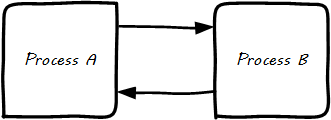I started with one session design and switched “on the spot” to another!
I was ready to facilitate a second strategic planning session with a nonprofit board of directors when it took an unexpected turn. A few hours before the session, the board president received urgent information about a unique and impactful opportunity available to the organization. The participants agreed that they had to use the session to decide whether to take the opportunity. I had to immediately design activities that would help the participants make the most beneficial decisions about the opportunity presented to them.

Here’s how we navigated the whirlwind and reached a decision.
1️⃣ Understanding the opportunity and sharing perspectives
🔤 Description of the facts: The Chair and other board members provided information about the opportunity with each board member asking clarifying questions.
👂 Active Listening: Participants individually wrote notes about how they saw the opportunity fitting with their goals from the first session. They then discussed in pairs with one person being the speaker and talking for two minutes about her thoughts. The second person gave the gift of listening. They then changed roles. I then facilitated a total group discussion about what they said and heard. This activity helped the participants understand their own and each other’s thoughts about the opportunity.
2️⃣ Weighing the Pros and Cons
✔ ✖ We listed the pros (advantages) and cons (disadvantages) related to the opportunity and then discussed them thoroughly.
3️⃣ Embracing Diverse Views
😀 Be a Champion! 🙁 A Naysayer! 😑 A Devil’s Advocate! I invited the participants to speak as:
1. Champions supporting the opportunity offered by the situation,
2. Naysayers opposed to the opportunity,
3. Devil’s advocates to question every aspect of the opportunity.
4️⃣ Reaching a decision
🖐 Five-Finger Method: When the group seemed to have discussed all aspects of the opportunity, I called for a five-finger decision based on Michael Wilkinson’s book “The Secrets of Facilitation.” Each person put up their fingers to indicate their support for the opportunity, ranging from 1 strongly disagree to 5 strongly agree.
👍 Final Round: Each member shared their decision, culminating in a collective decision.
Throughout this process, I applied principles and techniques from The Circle Way and the Focused Conversation (ORID), adapting to suit the group’s needs. A skilled facilitator needs to be highly skilled in one or two approaches and draw on them in moments of conflict, confusion, and in my case, rapid re-design of a session.
Facilitation is a rewarding mix of pre-design and “on the spot” response to the needs of the group. Enjoy the challenge and freedom of this balance.
